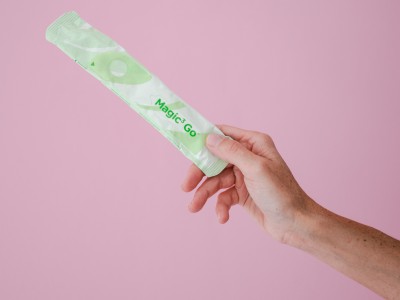Ever wondered what exactly a urinary catheter is? A urinary catheter is a thin, flexible tube designed to help drain urine from the bladder. Catheters are commonly used for people experiencing difficulty urinating on their own. They’re also recommended for individuals with specific medical conditions like multiple sclerosis, spinal cord injuries, or spina bifida.
Find out more in this comprehensive blog post.
What is a Urinary Catheter and How Does It Work?
An intermittent urinary catheter is used to drain urine from the bladder. Hygiene is critical when you learn to use catheters because you may put yourself at risk of infection otherwise.
Proper handwashing and catheter preparation are essential.
How to Use a Urinary Catheter: Hygiene Tips for Men and Women
Using a catheter safely requires attention to hygiene and technique. Here are some general tips for men and women:
Catheter Hygiene Tips for Men
- Preparation: Wash your hands thoroughly and gather all supplies. Gloves are optional but can be helpful.
- Cleaning: If uncircumcised, gently pull back the foreskin and clean the tip of the penis with an antiseptic wipe as directed by your healthcare provider.
- Lubrication: Apply the provided gel to the first few inches of the catheter.
- Insertion: Hold the penis with one hand and gently insert the catheter with the other hand. Avoid forcing the catheter; instead, relax and breathe deeply for smoother insertion.
- Aftercare: Once the catheter is removed, clean the area and wash your hands thoroughly.
Catheter Hygiene Tips for Women
- Preparation: Wash your hands, gather supplies, and use gloves if preferred.
- Cleaning: Gently separate the labia and clean the area around the urinary opening with an antiseptic wipe or soapy water, rinsing and drying thoroughly.
- Lubrication: Apply the gel provided to the first few inches of the catheter.
- Insertion: Using a mirror may help initially. Gently insert the catheter into the urinary opening, relaxing as much as possible.
- Aftercare: After removing the catheter, clean the area again and wash your hands.
Types of Urinary Catheters
- Indwelling Catheters (Foley Catheters)
Indwelling catheters are inserted by a healthcare provider and stay in place for continuous drainage, usually held in position by a small balloon. They may be placed through the urethra or directly into the bladder through a small incision (suprapubic catheter). - External Catheters (Condom Catheters)
External catheters fit over the penis, like a condom, with a tube connected to a collection bag. These are non-invasive and generally have a lower infection risk, commonly used for men with mobility or cognitive challenges. - Intermittent Catheters (In-and-Out Catheters)
Intermittent catheters are inserted as needed to empty the bladder and then removed immediately after. Often used post-surgery or by individuals who can self-catheterize, they offer flexibility and reduce the need for a continuously inserted catheter.
What are the Signs of a Catheter-Associated Urinary Tract Infection (UTI)?
Using a catheter can increase the risk of urinary tract infections. Common symptoms include:
- Fever and chills
- Cloudy or foul-smelling urine
- Burning sensation during urination
- Lower back pain or abdominal discomfort
- Blood in the urine
If you experience any of these symptoms, consult your healthcare provider promptly for assessment and treatment.
Where to Buy a Urinary Catheter
Urinary catheters offer an essential solution for individuals who need assistance with urination due to various medical conditions or surgeries. Proper hygiene, understanding catheter types, and following a healthcare provider’s guidance can help ensure comfortable and effective catheter use.
Ready to get your urinary catheter supplies from a company that cares? Reach out to us at Patient Care Medical. We’ll gladly answer any product questions and get you set up on the right catheter for your unique needs.


